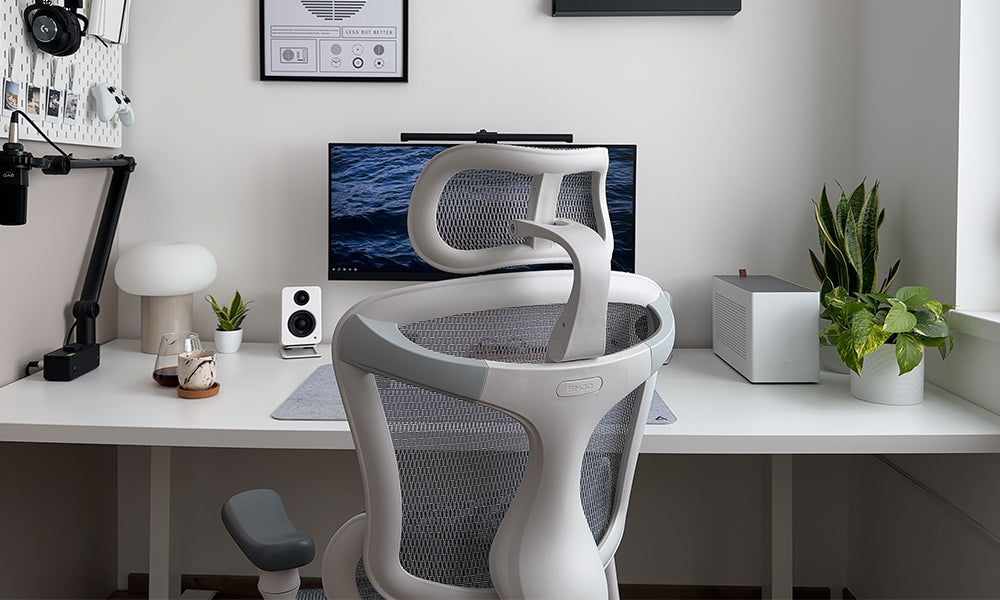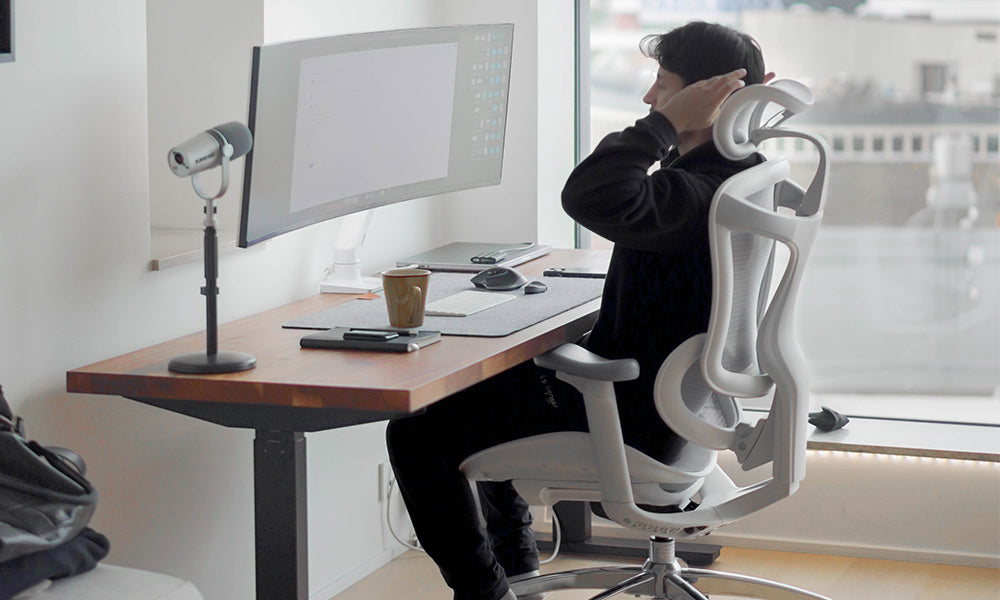When it comes to setting up the perfect workspace, comfort is paramount. An essential component of ensuring comfort in an office environment is the office chair. Office chairs have evolved significantly over the years, and they now come equipped with various features aimed at enhancing your seating experience. One of these features is the tilt lock mechanism.
In this article, we will delve into the world of office chairs and explore the concept of tilt lock. We'll discuss what it is, how it works, and the benefits it offers to those who spend hours sitting at a desk. So, whether you're an office worker, a student, a gamer, or simply someone interested in ergonomic design, read on to discover why tilt lock is a vital feature for your office chair.
What is Tilt Lock?
Tilt lock is a feature integrated into many office chairs that allows users to control the chair's reclining and rocking functions. Essentially, it enables you to lock the chair in a specific position, preventing it from leaning back or rocking forward. This is particularly useful when you want to maintain a fixed, comfortable posture during your work or leisure activities.
Tilt lock mechanisms can vary in design, but they typically involve a lever, knob, or button located underneath or on the side of the chair. By engaging or disengaging this mechanism, you can adjust the chair's tilt to suit your preferences.
How Does Tilt Lock Work?
The exact operation of a tilt lock mechanism can differ from chair to chair, but the basic principle remains the same. When you tilt your chair back, it's the tilt lock that allows you to secure it in a particular position. This ensures that you won't have to constantly exert effort to keep the chair from reclining further or rocking when you don't want it to.
Here's a simple breakdown of how a typical tilt lock mechanism works:
Lever or Control: Most office chairs with tilt lock features have a lever, knob, or button that controls the mechanism. To lock or unlock the tilt, you'll need to manipulate this control.
Locking Position: When you engage the tilt lock, the chair's backrest is held in a fixed, reclined position. You can usually adjust this position to your liking, depending on the chair's design. Some chairs offer multiple locking positions, while others simply allow for a locked or unlocked state.
Free Tilting: With the tilt lock disengaged, the chair is free to tilt back and forth as you move or shift your weight. This can be convenient when you want to relax or recline.
By understanding how the tilt lock works, you can make the most of this feature to create a comfortable and ergonomic seating experience.
The Benefits of Tilt Lock
Now that we know what tilt lock is and how it functions, let's explore the various benefits it offers to individuals who spend a substantial amount of time sitting in their office chairs.
A. Ergonomic Support
Ergonomics is the science of designing a workspace to optimize productivity, reduce discomfort, and prevent injuries. Tilt lock is a crucial component in achieving ergonomic support in your office chair. It allows you to find and maintain a reclined position that suits your body's natural alignment, reducing the strain on your back and neck.
For instance, when you engage the tilt lock, you can position the chair's backrest at a slight recline, which helps support the natural curve of your lower back. This reduces the pressure on your spine and promotes good posture, which is essential for long hours of work or study.
B. Comfort and Relaxation
Sometimes, you might want to take a brief break, lean back, and relax in your office chair. Tilt lock enables you to do this comfortably and safely. By locking the chair in a slightly reclined position, you can relieve pressure on your lower back and enjoy a moment of relaxation. This can be particularly beneficial during short breaks or when you need to unwind without leaving your desk.
C. Preventing Distractions
For those who work or study in a busy or noisy environment, maintaining focus is crucial. An office chair with tilt lock can help prevent distractions caused by fidgeting or constantly adjusting your seating position. By locking the chair in place, you can concentrate on the task at hand without being distracted by the chair's movements.
D. Versatility
Tilt lock is not limited to office use; it's a versatile feature that can benefit various settings and activities. Gamers, for instance, often find tilt lock useful for maintaining a stable and comfortable position during long gaming sessions. Students and writers can also appreciate the ability to lock their chair in a specific posture, enhancing their focus and productivity.
E. Reduced Fatigue
One of the most significant advantages of tilt lock is its ability to reduce physical fatigue during extended periods of sitting. By securing the chair in an ideal reclined position, it minimizes the need for constant muscle engagement to keep the chair from tilting further. This results in reduced muscle fatigue and greater comfort, making it easier to stay productive and alert throughout the day.
Types of Tilt Lock Mechanisms
Tilt lock mechanisms come in various designs, each offering a slightly different user experience. It's essential to understand these types to choose the one that best suits your needs. Here are some common types of tilt lock mechanisms:
A. Standard Tilt Lock: The most basic type of tilt lock mechanism allows you to lock the chair in a single reclined position. You can usually control the locking and unlocking using a lever or knob. This design is straightforward and easy to use.
B. Multi-Position Tilt Lock: Some chairs offer multiple locking positions, enabling you to choose from a range of angles for the chair's backrest. This versatility allows you to fine-tune your seating position to your exact preference.
C. Synchro-Tilt Mechanism: The synchro-tilt mechanism is more advanced and often found in ergonomic office chairs. It synchronizes the movement of the chair's seat and backrest, so when you lean back, the seat tilts slightly as well. This promotes better weight distribution and comfort while keeping your feet flat on the floor.
D. Knee-Tilt Mechanism: This mechanism has a pivot point located closer to the front of the seat, which allows for a more pronounced rocking motion when the chair is unlocked. It's often associated with executive or high-end office chairs.
E. Center-Tilt Mechanism: In this design, the chair's pivot point is located at the center of the seat, offering a smooth and balanced rocking motion. It's a popular choice for task chairs and conference room seating.
Choosing the Right Office Chair with Tilt Lock
Selecting the right office chair with tilt lock is essential for ensuring your comfort and productivity. Here are some factors to consider when making your choice:
A. Ergonomics: Look for a chair that provides good lumbar support and allows you to lock the tilt in a position that maintains the natural curve of your lower back.
B. Adjustability: Ensure the chair offers a range of locking positions, especially if you have specific preferences for your seating angle. Multi-position tilt lock mechanisms are a great choice for customization.
C.Quality: Invest in a well-built chair with high-quality materials and a sturdy tilt lock mechanism. Durability is key to ensuring your chair will last for years without issues.
D. User-Friendly Controls: Choose a chair with a tilt lock control that is easy to reach and operate. The controls should be intuitive, and you should be able to lock and unlock the tilt with minimal effort.
E. Comfort: Pay attention to the padding and upholstery of the chair. It's important to have a comfortable seat and backrest to prevent discomfort during long hours of use.
F. Style and Aesthetics: Consider the design and style of the chair to ensure it complements your workspace. There are various options available, from classic executive chairs to modern, ergonomic designs.
G. Budget: Office chairs with tilt lock come in a wide range of price points. Determine your budget and look for a chair that offers the best combination of features, quality, and affordability within your price range.
H. Warranty: Check the manufacturer's warranty to ensure your investment is protected. A good warranty can provide peace of mind in case any issues arise with your chair.
It's worth trying out different chairs and sitting in them for an extended period to assess their comfort and how well they fit your body. Online reviews and recommendations from colleagues or friends can also be valuable resources when making your decision.
Maintaining Your Office Chair with Tilt Lock
To ensure your office chair with a tilt lock mechanism remains in excellent condition and continues to offer the benefits mentioned earlier, regular maintenance is essential. Here are some tips to help you maintain your chair:
A. Clean Regularly: Dust, dirt, and spills can accumulate on your chair over time. Regularly clean the chair's upholstery and any exposed metal or plastic parts. Follow the manufacturer's cleaning instructions to avoid damaging the material.
B. Lubricate Moving Parts: If your chair has moving parts, such as a synchro-tilt mechanism, it's a good idea to lubricate these parts as recommended in the user manual. This will help ensure smooth and consistent movement.
C. Check for Loose Screws: Periodically inspect the chair for loose screws or bolts, especially in the tilt lock mechanism. Tighten any loose fasteners to prevent wobbling or instability.
D. Avoid Overloading: Be mindful of the chair's weight capacity, and avoid overloading it. Overloading can strain the tilt lock mechanism and lead to premature wear and tear.
E. Store Appropriately: If you need to move or store the chair, do so carefully. Avoid dropping or mishandling the chair, as this can damage the tilt lock mechanism.
F. Use a Chair Mat: If your chair is on a carpeted floor, consider using a chair mat to reduce friction and protect the chair's casters. This can prevent unnecessary wear on the chair's components.
By taking these maintenance steps, you can extend the lifespan of your office chair and ensure that the tilt lock mechanism continues to function effectively.
Conclusion
In the world of modern office furniture, an office chair is not just a piece of seating; it's a tool designed to enhance your comfort, productivity, and overall well-being. Tilt lock is a feature that plays a vital role in achieving these goals.
Understanding what tilt lock is and how it works empowers you to make an informed choice when selecting an office chair. The benefits of tilt lock are numerous, including ergonomic support, comfort, focus, versatility, and reduced fatigue. With various types of tilt lock mechanisms available, you can choose a chair that best suits your needs and preferences.
When shopping for an office chair with tilt lock, consider factors like ergonomics, adjustability, quality, user-friendly controls, comfort, style, and budget. Regular maintenance is also key to preserving the chair's functionality and ensuring it serves you well for years to come.
Investing in a quality office chair with tilt lock is an investment in your well-being and productivity. So, the next time you're in the market for an office chair, remember the importance of tilt lock and how it can make a significant difference in your daily work or leisure activities. Your body will thank you for it.






Laisser un commentaire
Ce site est protégé par hCaptcha, et la Politique de confidentialité et les Conditions de service de hCaptcha s’appliquent.